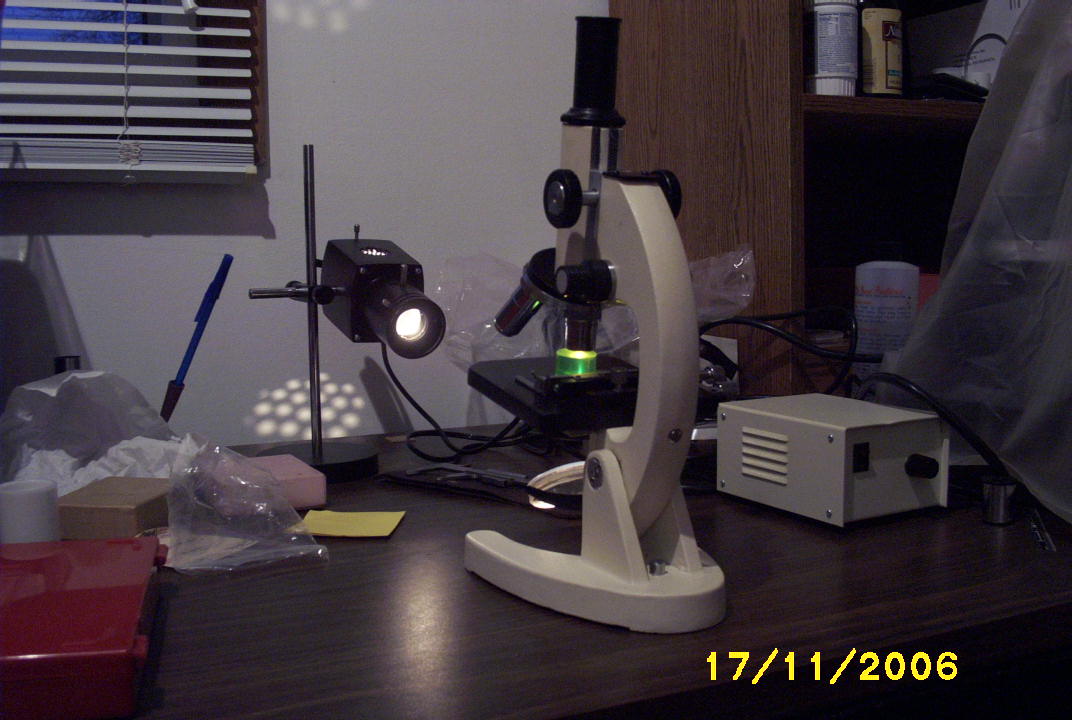
|
Illumination experiments with a simple microscope. by Bill Resch, USA |
For traveling, I purchased an inexpensive old style microscope. It did not have a sub-stage condenser, but it had a sub-stage iris diaphragm. I machined the stage so that I could cement a 0.65 NA condenser into it. This condenser has no correction whatsoever. But with this condenser in place I was able to detect (barely) the grid on Pleurosigma angulatum, using the 40X objective and a ground glass illuminator.
Since now I had a reasonable good illuminator, (the modified Brunel) I thought I will do some experiments with it. I tried to set it up for Koehler. The condenser in the stage could not be moved to focus the field diaphragm. As it turned out, it was way off. The image with a 40X objective appeared as if the aperture of the stage condenser was set to small, giving me a very glassy image with very high contrast. This was probably due to the condenser not being corrected, giving a too narrow a cone of light. I wanted to see this cone of light. I laid a glass-piece, designed to show the illumination cone (I do not know what it is called), onto the stage and took some pictures of it and photomicrographs, accompanying the setting.

Inexpensive stand, where I installed a 0.65NA condenser into the stage, to show
the illuminating cone of light with glass cylinder made for this purpose.
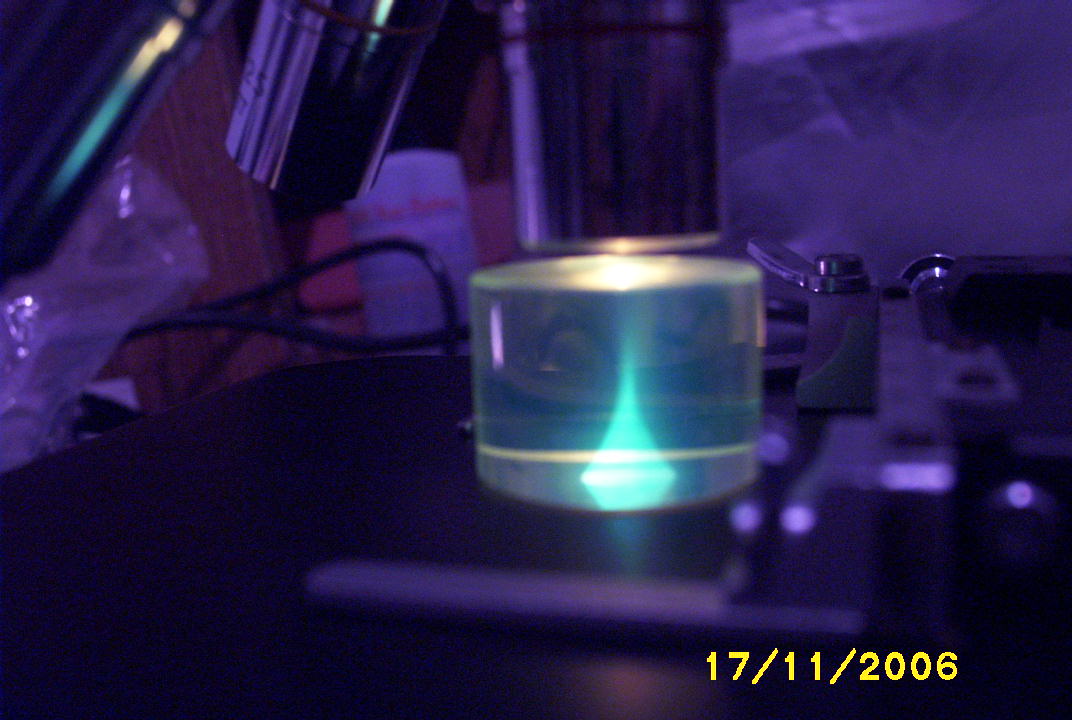
Nice cone of light. Brunel illuminator and flat mirror, no diffusers.
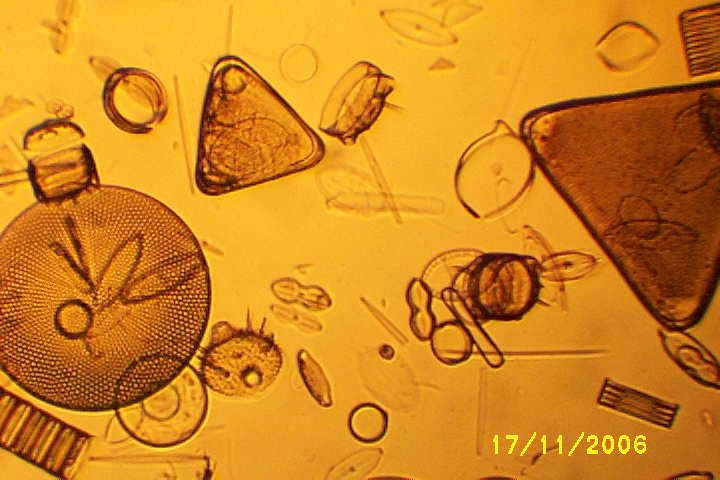
Marine diatoms taken with the above setting. 10X objective, 15X eyepiece.
Held the Kodak camera to the eyepiece with a tripod.
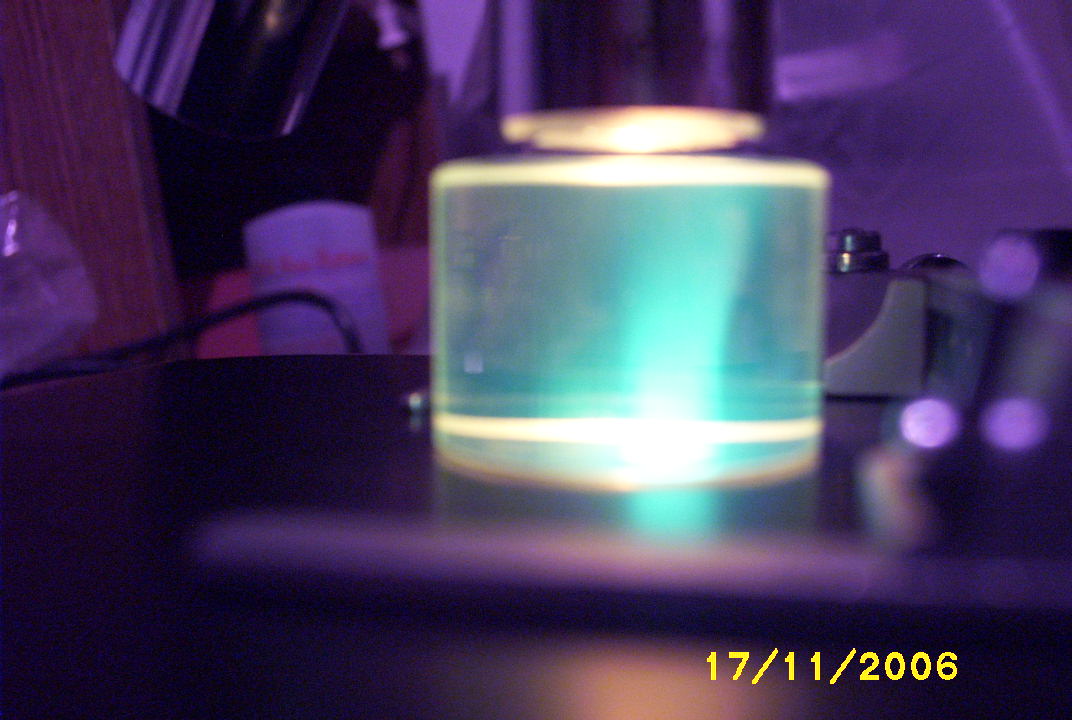
Light cone, using the concave side of the mirror.
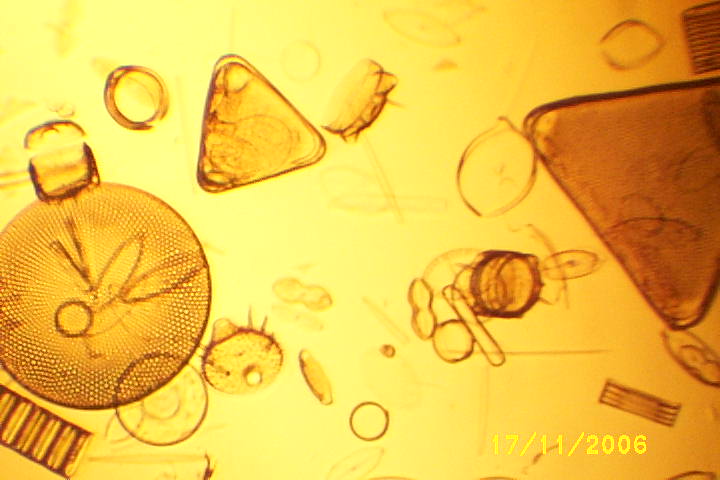
Same image. No changes made to camera or microscope
Except using the mirror’s concave side.
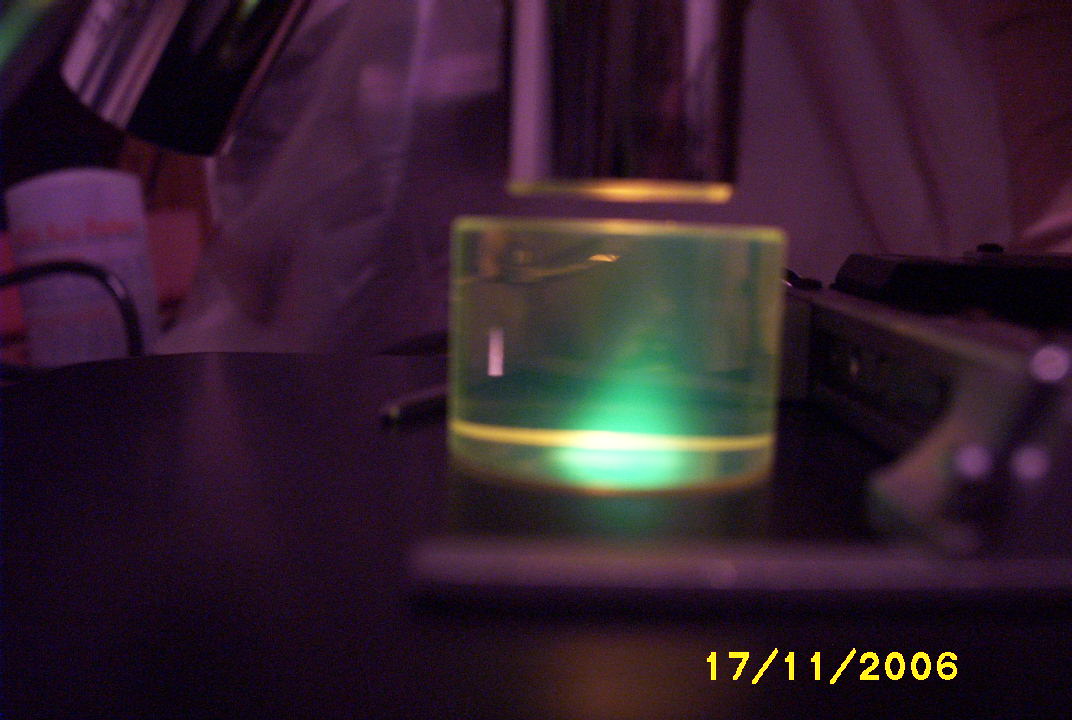
Light cone, using a ground glass filter under the sub-stage condenser.
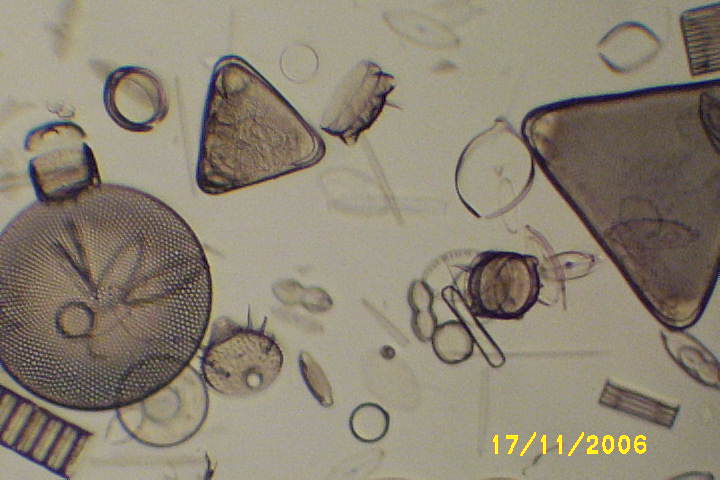
Again same settings. Ground glass inserted below the sub-stage condenser.
I actually used the mirror’s concave side for this picture to show how ground glass fixes uneven illumination without loss of detail. At this low power and the primitive setup no big changes were expected, but careful observation shows that the first image has a little more detail. It was also more pleasing to the eye. I like the clear glassy Koehler-look.
Comments to the author, Bill Resch, are welcomed.
Please report any Web problems or offer general comments to the Micscape Editor.
Micscape is the on-line monthly magazine of the Microscopy UK web site at Microscopy-UK.